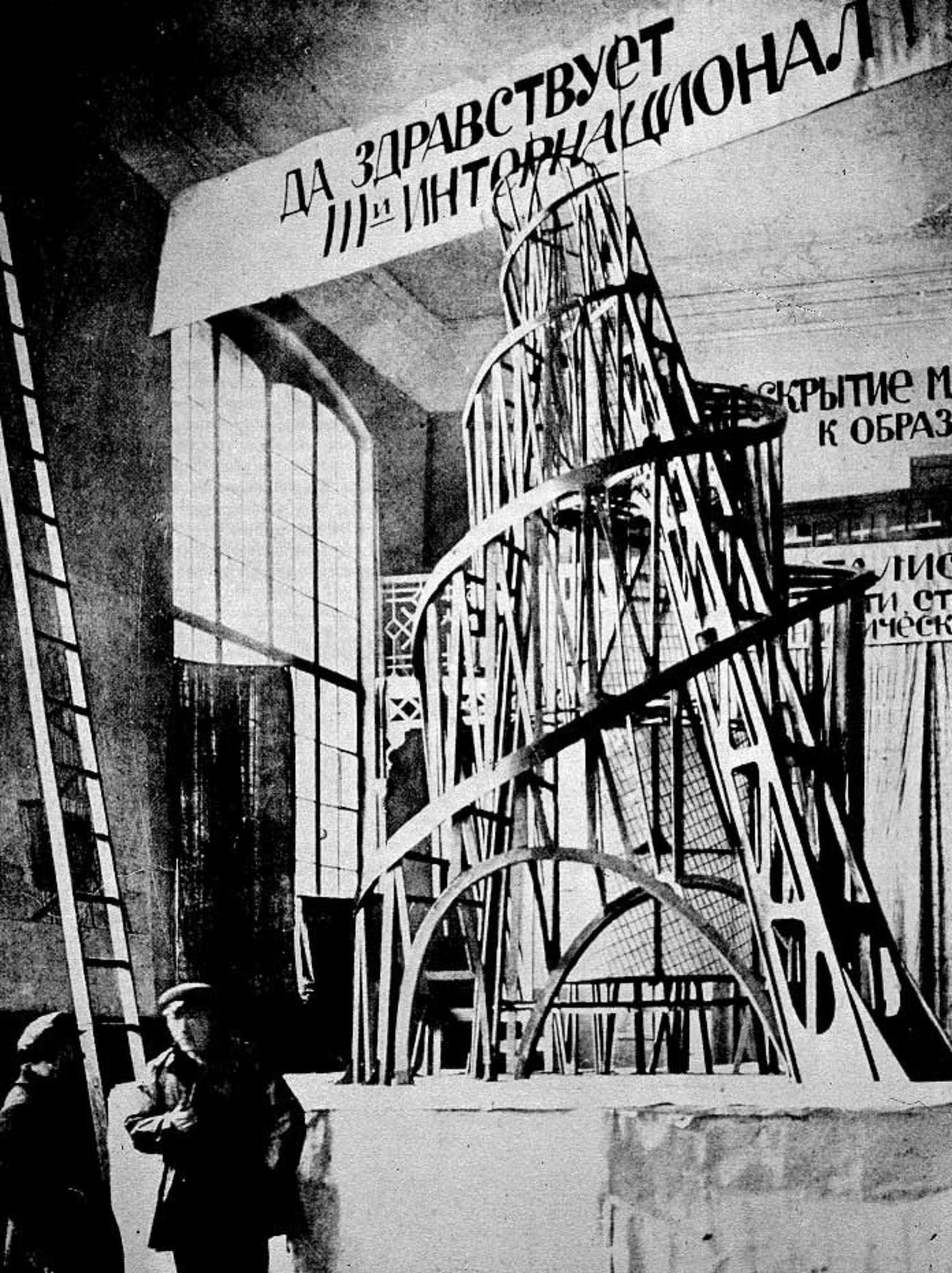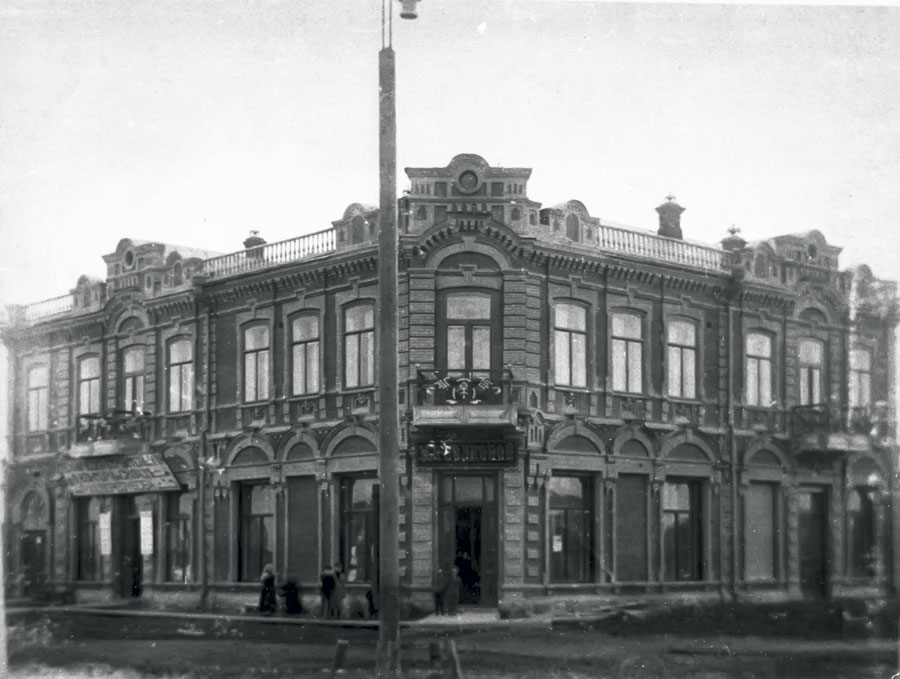|
Gorky Street, Novosibirsk
Maxim Gorky Street (russian: Улица Максима Горького) is an east-west street in Zheleznodorozhny and Tsentralny districts of Novosibirsk, Russia. The street starts from nameless passage connecting Gorky Street with Dimitrov Avenue, crosses Street of Revolution, Uritsky and Sovetskaya streets, Krasny Avenue, Serebrennikovskaya, Kamenskaya and Shamshin Family streets. The street ends in city block opposite the Aura Mall. History The street was previously called the Tobizenovskaya Street, in 1920 it was renamed in honor of Maxim Gorky. Gallery File:Gorky Street, Novosibirsk 05.jpg File:Gorky Street, Novosibirsk 01.jpg Gorky Street, Novosibirsk 06.jpg Architecture Tsarist period * Verkhovaya House is a wooden house built in 1908. * Gorky Street 81 is a wooden house built in 1910 * Kryukov House is a building on the corner of Sovetskaya and Gorky streets. It was built in 1908 by merchant Kryukov. Preserved architectural ensemble of three wooden houses * Gor ... [...More Info...] [...Related Items...] OR: [Wikipedia] [Google] [Baidu] |
Novosibirsk
Novosibirsk (, also ; rus, Новосиби́рск, p=nəvəsʲɪˈbʲirsk, a=ru-Новосибирск.ogg) is the largest city and administrative centre of Novosibirsk Oblast and Siberian Federal District in Russia. As of the Russian Census (2021), 2021 Census, it had a population of 1,633,595, making it the most populous city in Siberia and the list of cities and towns in Russia by population, third-most populous city in Russia. The city is located in southwestern Siberia, on the banks of the Ob River. Novosibirsk was founded in 1893 on the Ob River crossing point of the future Trans-Siberian Railway, where the Novosibirsk Rail Bridge was constructed. Originally named Novonikolayevsk ("New Nicholas") in honor of Emperor Nicholas II, the city rapidly grew into a major transport, commercial, and industrial hub. Novosibirsk was ravaged by the Russian Civil War but recovered during the early Soviet Union, Soviet period and gained its present name, Novosibirsk ("New Siberia"), i ... [...More Info...] [...Related Items...] OR: [Wikipedia] [Google] [Baidu] |
Aura Mall, Novosibirsk
The Aura is a shopping and leisure center in Tsentralny City District, Novosibirsk, Tsentralny District of Novosibirsk, Russia. It was opened in 2011. History The shopping complex was opened on March 18, 2011. Initially, it was owned by Renaissance Development. In 2013, Rosevrodevelopment bought Aura for 195.5 million euros. Praedium Investment Capital valued the purchase at $784 million. Description The mall is located at the intersection of Voyennaya and Ippodromskaya streets. Its total area is 150,000 square meters. June 5, 2013. The shopping center consists of two underground fl ... [...More Info...] [...Related Items...] OR: [Wikipedia] [Google] [Baidu] |
Transfiguration Cathedral, Novosibirsk
The Transfiguration Cathedral (russian: Собор Преображения Господня) is a religious building of the Catholic Church that serves as the main temple of the Diocese of the Transfiguration in Novosibirsk in Russia. It was built between 1992 and 1997 in a modern style. It offers religious services including the Mass in Russian and Polish. The cathedral is located at Maxim Gorki Street. The first stage was completed in 1993 with the design of architect Vladimir Borodin but was not consecrated until the August 10, 1997 in the presence of the Apostolic Nuncio in Russia John Bukovsky and Bishop Joseph Werth. See also *Roman Catholicism in Russia * Transfiguration Cathedral *Roman Catholic Diocese of Transfiguration at Novosibirsk The Roman Catholic Diocese of the Transfiguration at Novosibirsk ( la, Neosiberian(a) Transfigurationis) is a suffragan Latin diocese in the Ecclesiastical province of the Metropolitan Archbishop of Mother of God at Moscow. Its cathe ... [...More Info...] [...Related Items...] OR: [Wikipedia] [Google] [Baidu] |
House Of Socialist Agriculture
The House of Socialist Agriculture (russian: Дом Соцземледелия) is a building in Tsentralny City District of Novosibirsk, Russia. It is located between Gorky Street, Oktyabrskaya Magistral and Krasny Avenue. The building was designed by architect Nikolay Kuzmin. History The House of Socialist Agriculture was built in 1936. In 1942 Research Institute of Measuring Instruments was located here. It was evacuated to Novosibirsk. In 1952 the building was reconstructed by architect Nikolay Vasilyev. Gallery File:Октябрьская магистраль, Новосибирск 01.jpg File:Chashka Kofe, coffee shop chain 01.jpg See also * 100-Flat Building * Oblplan House Oblplan House (russian: Дом Облплана) is a residential building in neoclassical style. It is located in Tsentralny City District of Novosibirsk, Russia, on Krasny Avenue Krasny Prospekt (russian: Красный проспект) or ... References External links The House of ... [...More Info...] [...Related Items...] OR: [Wikipedia] [Google] [Baidu] |
Andrey Kryachkov
, image = Крячков Андрей Дмитриевич.jpg , image_size = , alt = , caption = , birth_name = Andrey Dmitriyevich Kryachkov , birth_date = , birth_place = Vakhrevo, Rostovsky Uyezd, Yaroslavl Governorate, Russian Empire , death_date = , death_place = Sochi, Krasnodar Krai, RSFSR, Soviet Union , death_cause = , resting_place_coordinates = , nationality = → , fields = , workplaces = , patrons = , education = , alma_mater = St. Petersburg institute of civil engineering , thesis_title = , thesis_url = , thesis_year = , doctoral_advisor = , academic_advisors = , doctoral_students = , notable_students = , known_for = , influences = , influenced = , awards = , author_abbrev_bot = , author_abbrev_zoo = , spouse = , pa ... [...More Info...] [...Related Items...] OR: [Wikipedia] [Google] [Baidu] |
Constructivist Architecture
Constructivist architecture was a constructivist style of modern architecture that flourished in the Soviet Union in the 1920s and early 1930s. Abstract and austere, the movement aimed to reflect modern industrial society and urban space, while rejecting decorative stylization in favor of the industrial assemblage of materials. Designs combined advanced technology and engineering with an avowedly communist social purpose. Although it was divided into several competing factions, the movement produced many pioneering projects and finished buildings, before falling out of favour around 1932. It has left marked effects on later developments in architecture. Definition Constructivist architecture emerged from the wider Constructivist art movement, which grew out of Russian Futurism. Constructivist art had attempted to apply a three-dimensional cubist vision to wholly abstract non-objective 'constructions' with a kinetic element. After the Russian Revolution of 1917 it turned its ... [...More Info...] [...Related Items...] OR: [Wikipedia] [Google] [Baidu] |
Kryukov House
Kryukov House (russian: Дом Крюкова) is a building in Zheleznodorozhny City District of Novosibirsk, Russia, built in 1908. It is located on the corner of Sovetskaya and Gorky streets. The house originally belonged to the merchant Zakhary Grigoryevich Kryukov. History The house was built in Novonikolayevsk on Kabinetskaya (now Sovetskaya) Street in 1908. The basement and first floor of the building remained at the disposal of Kryukov, the second floor was rented by Novonikolayevsk Public Meeting. Later, Novonikolayevsk Public Meeting also rented the first floor. In 1910, Kryukov's wife, Yekaterina Ivanovna Kryukova, wrote a request to Novonikolayevsk City Government for the construction of an extension to the building along Tobizenovskaya Street (current Gorky Street). In 1912, Novonikolayevsk Public Meeting was closed, and in 1913 Kryukov opened Diana Cinema (later renamed Luchshy Cinema) on the first floor, which worked until 1918; the second floor was occupied by ... [...More Info...] [...Related Items...] OR: [Wikipedia] [Google] [Baidu] |
Maxim Gorky
Alexei Maximovich Peshkov (russian: link=no, Алексе́й Макси́мович Пешко́в; – 18 June 1936), popularly known as Maxim Gorky (russian: Макси́м Го́рький, link=no), was a Russian writer and socialist political thinker and proponent. He was nominated five times for the Nobel Prize in Literature. Before his success as an author, he travelled widely across the Russian Empire changing jobs frequently, experiences which would later influence his writing. Gorky's most famous works are his early short stories, written in the 1890s (" Chelkash", " Old Izergil", and " Twenty-Six Men and a Girl"); plays '' The Philistines'' (1901), '' The Lower Depths'' (1902) and '' Children of the Sun'' (1905); a poem, " The Song of the Stormy Petrel" (1901); his autobiographical trilogy, '' My Childhood, In the World, My Universities'' (1913–1923); and a novel, ''Mother'' (1906). Gorky himself judged some of these works as failures, and ''Mother'' has ... [...More Info...] [...Related Items...] OR: [Wikipedia] [Google] [Baidu] |
City Block
A city block, residential block, urban block, or simply block is a central element of urban planning and urban design. A city block is the smallest group of buildings that is surrounded by streets, not counting any type of thoroughfare within the area of a building or comparable structure. City blocks are the space for buildings within the street pattern of a city, and form the basic unit of a city's urban fabric. City blocks may be subdivided into any number of smaller land lots usually in private ownership, though in some cases, it may be other forms of tenure. City blocks are usually built-up to varying degrees and thus form the physical containers or "streetwalls" of public space. Most cities are composed of a greater or lesser variety of sizes and shapes of urban block. For example, many pre-industrial cores of cities in Europe, Asia, and the Middle East tend to have irregularly shaped street patterns and urban blocks, while cities based on grids have much more regular arran ... [...More Info...] [...Related Items...] OR: [Wikipedia] [Google] [Baidu] |
Russia
Russia (, , ), or the Russian Federation, is a List of transcontinental countries, transcontinental country spanning Eastern Europe and North Asia, Northern Asia. It is the List of countries and dependencies by area, largest country in the world, with its internationally recognised territory covering , and encompassing one-eighth of Earth's inhabitable landmass. Russia extends across Time in Russia, eleven time zones and shares Borders of Russia, land boundaries with fourteen countries, more than List of countries and territories by land borders, any other country but China. It is the List of countries and dependencies by population, world's ninth-most populous country and List of European countries by population, Europe's most populous country, with a population of 146 million people. The country's capital and List of cities and towns in Russia by population, largest city is Moscow, the List of European cities by population within city limits, largest city entirely within E ... [...More Info...] [...Related Items...] OR: [Wikipedia] [Google] [Baidu] |
Kamenskaya Street, Novosibirsk
Kamenskaya Street (russian: Каменская улица) is a street in Tsentralny City District of Novosibirsk, Russia. The street starts from Oktyabrskaya Magistral, runs north and forms a T-intersection with Pisarev Street. Architecture * Rabochaya Pyatiletka is a zig zag building built in the 1930s * Soyuzzoloto House is a constructivist building on the corner of Kamenskaya and Oktyabrskaya streets. It was built in 1932. * Baths No 8 is a public bath built in 1937. * Doubletree by Hilton is a hotel built in 2010. It is located on the corner of Kamenskaya and Chaplygin streets. File:ЖАКТ «Пятилетка», Новосибирск 01.jpg, Rabochaya Pyatiletka File:Дом жилой Союззолото ул. Каменская, 16 Новосибирск 2.jpg, Soyuzzoloto House File:Бани № 8, Новосибирск 01.jpg, Baths No. 8 File:DoubleTree by Hilton, Novosibirsk 01.jpg, Doubletree by Hilton Churches * Transfiguration Cathedral is a catholic cath ... [...More Info...] [...Related Items...] OR: [Wikipedia] [Google] [Baidu] |
Serebrennikovskaya Street, Novosibirsk
Serebrennikovskaya Street (russian: Серебренниковская улица) is a street in Tsentralny City District of Novosibirsk, Russia. It runs south-north. The street starts from the Altay Railway Overpass and ends near the southern facade of the Novosibirsk Opera and Ballet Theatre. History The street was first called the Alexandrovskaya Street, but was renamed in 1920 for Fyodor Serebrennikov, Russian revolutionary. Gallery File:Serebrennikovskaya Street, Novosibirsk 05.jpg, Altay Railway Overpass, The Street Beginning File:Serebrennikovskaya Street, Novosibirsk 02.jpg File:Serebrennikovskaya Street, Novosibirsk 03.jpg, File:Bar club Guevara in Novosibirsk.jpg, Serebrennikovskaya Street in 2013 Architecture * Revenue House is a house built in 1910s. * School No. 12 is an educational institution, opened in 1912. Architect: Andrey Kryachkov. * Polyclinic No. 1 is a 1928 constructivist building designed by P. Shyokin. * NKVD House (Serebrennikovskaya Street 16 ... [...More Info...] [...Related Items...] OR: [Wikipedia] [Google] [Baidu] |



